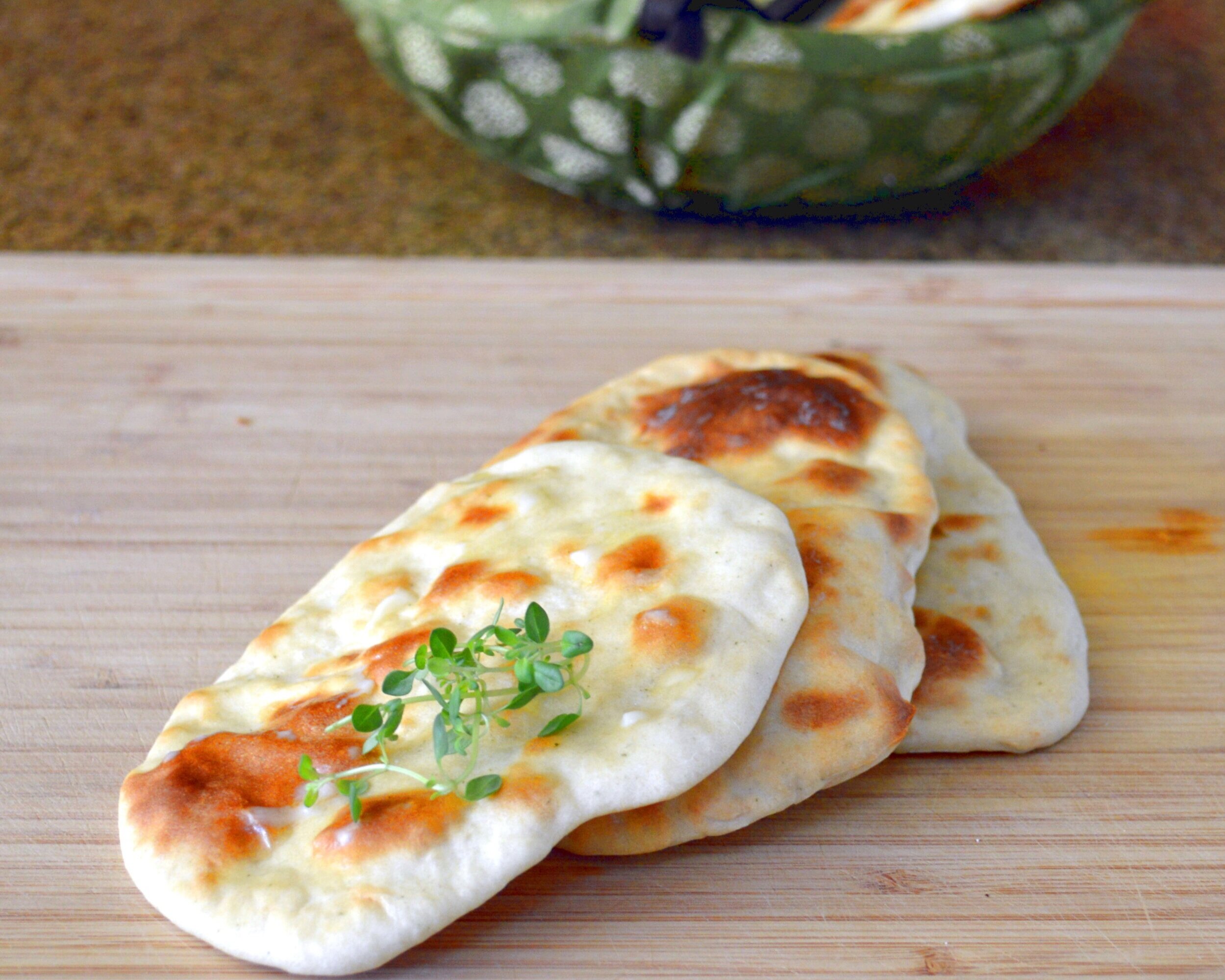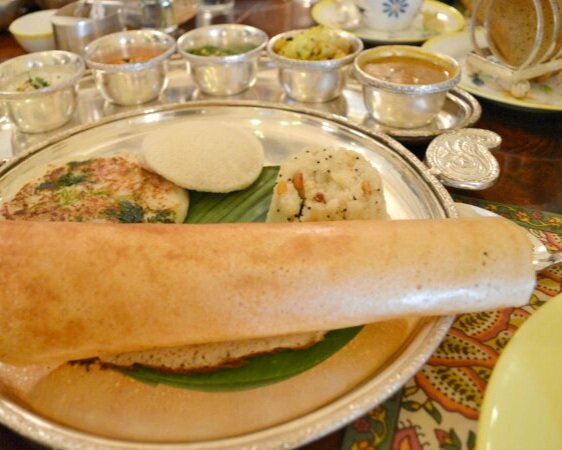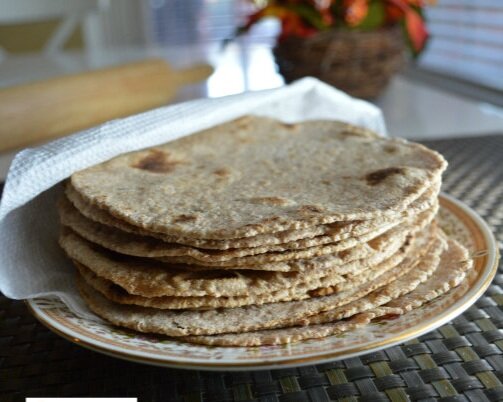Introduction to Indian Flatbreads
When I think of making Indian flatbreads at home, a fond memory from early childhood comes to mind; the image of my sister and me visiting a specialty wheat grinding store. I remember both of us being covered in a light dusting of flour, mesmerized by the gigantic wheat grinding stone called ‘Chakki’ spinning around while crushing whole wheat grains into whole wheat ‘Atta’ flour.
What Makes Indian Bread Stand Out?
If you learning how to make Indian food at home, it’s worth knowing that an Indian home kitchen is always stocked with generous quantities of three grains, ready to go at a moment’s notice: rice, lentils and whole wheat ‘Atta’ flour.
Most homemade Indian bread is unleavened and flat, made with the above mentioned ‘Atta’, an earthy flour of fiber-filled and protein rich, stone ground whole wheat grains. However, the choice of grain varietals for making Indian bread certainly doesn’t stop at whole or refined wheat. Flour types ranging from millet-bajra, sorghum-jowar, maize-makki, lentils-daal and rice, to name a few, are used for creating a vast array of Indian breads, hailing from different regions of the country.
For example, southern India has a predominant use of crêpe-like flatbread made with a fermented rice and lentil batter, known as ‘Dosa’ in its many versions.
Let’s take a brief look at the awe-inspiring variety of Indian breads from across India, with overlapping trends that have developed over the centuries.
Regional Variations
Specialties from the West:
Include soft thepla and crisp khakara and bhakri, as well as soft chapati, roti and phulka, using a mix of flour varietals like whole atta (wheat), besan (lentil), bajra (millet), jowar (sorghum). One of my personal favorites is the delicious combination of deep-fried puffy puris served with a western India favorite, sweetened yogurt Shrikhand.
North Indian Favorites:
Include whole wheat roti, chapati, phulkas and various stuffed parathas, along with fermented Indian breads made with maida (refined all-purpose flour) like naan, kulcha, bhatura and puri. One of this region’s favorites is maize flour based makki-di-roti.
Delightfully Different South Indian Breads:
Include the crepe-like dosa made using a fermented rice and lentil batter with a distinct tangy taste like none other, and its many variants like uttappams (thicker pancakes) with toppings on the batter, appams made of a fermented rice flour and coconut milk batter, and idiyappams steamed crepes made with thin rice flour noodles. South India also boosts of the much-loved southern multi-layered wheat based malabari parathas.
Few but Fun East Indian Bread:
Although highly dependent on steamed cooked rice in their diet, wheat-based deep fried puffy lucchi or puris and layered folded parathas can be found as part of East Indian meals.
Indian ‘Chakki’ Model
Wheat Grinding Stone for ‘Atta’
How to Cook Indian Bread
If you’re new to Indian cooking, flatbreads is a simple not-so-spicy way to introduce this cuisine into your family meals.
Common cooking technique for home-cooked Indian bread is on a flat cast iron griddle ‘tawa’ placed on the stovetop, with a flat square metal spoon used for flipping the flatbread. In the days gone by, Indian bread was cooked on an open fire, which imparts a whole new layer of smoky flavor to the bread.
Restaurants on the other hand, have the popular Indian clay-oven called ‘tandoor’, which uses high temperature convection cooking, to add intense flavor to wheat breads like tandoori naan, roti, kulcha and paratha.
Indian breads like the well known puri and their larger softer counterparts bhatura are deep fried, rendering a puffed Indian bread, crisp on the outside and soft cloud-like on the inside.
The intriguing variety and choices in Indian bread will make you want to applaud the evolved centuries old Indian cuisine, for setting the stage for creative bread-making twists.





